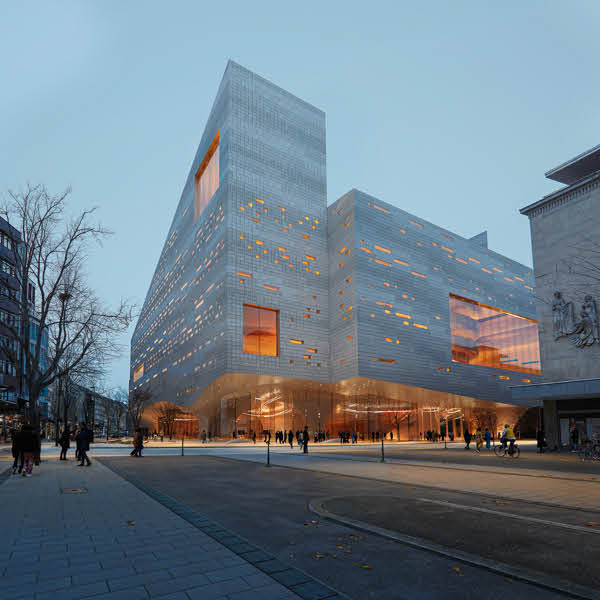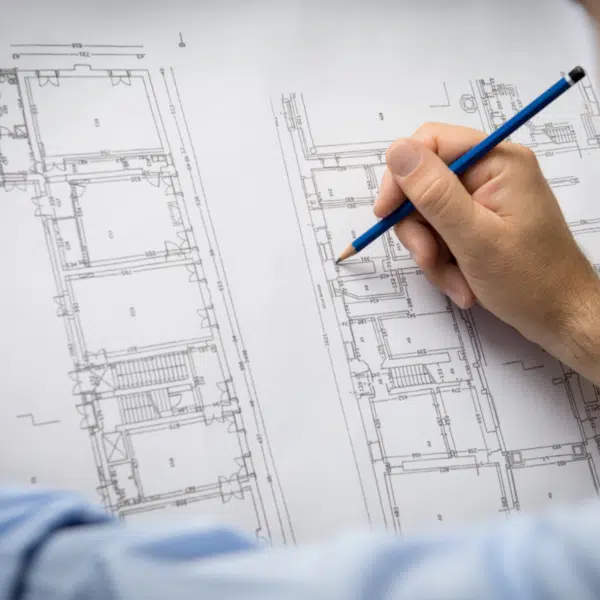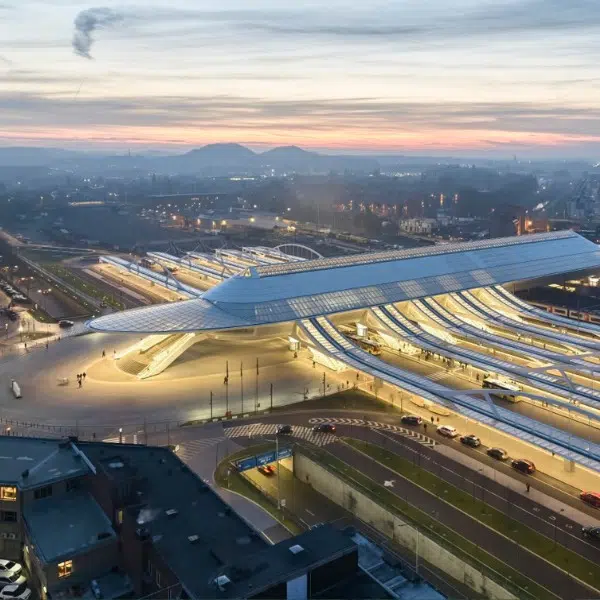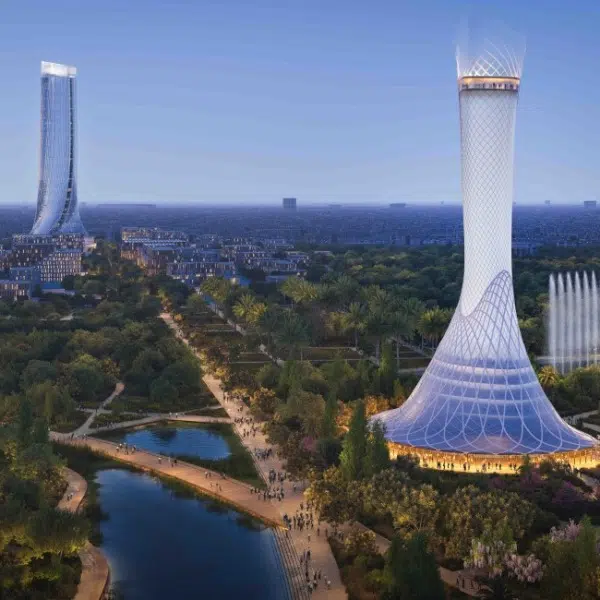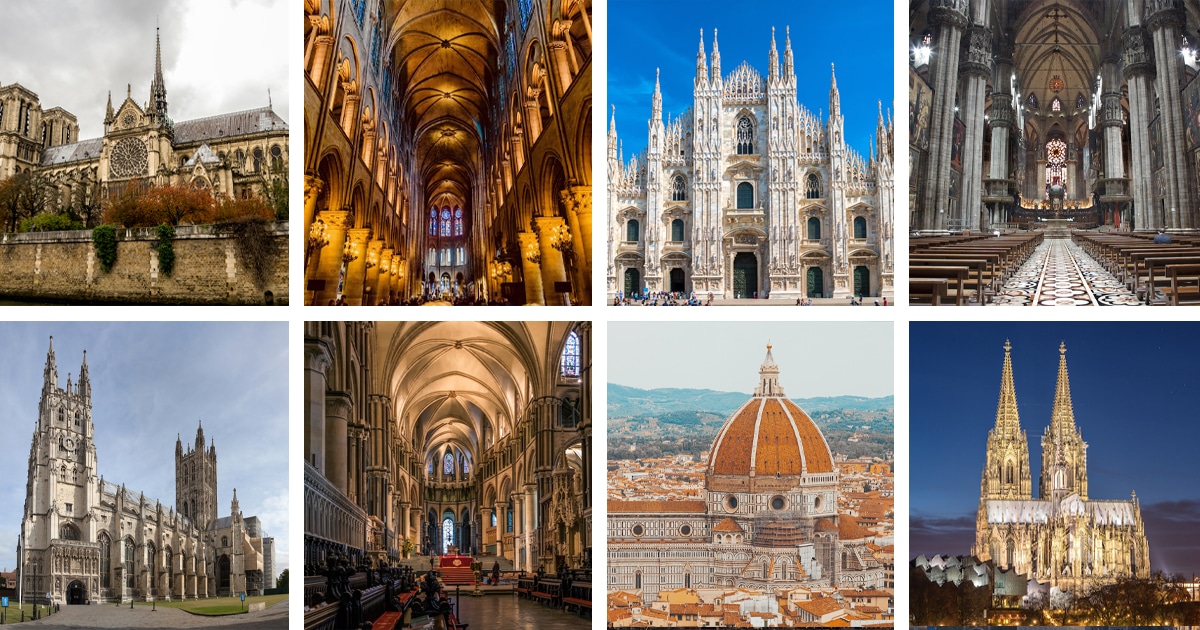
From left to right: Notre Dame, Notre Dame Interior, Milan Cathedral, Milan Cathedral Interior, Canterbury Cathedral, Canterbury Cathedral Interior, Santa Maria del Fiore, Cologne Cathedral
Though Gothic architecture may now be associated with dark and solemn cathedrals made of black stone, this style has always focused on creating beautiful and light spaces that defied gravity to worship God. Many designers of Gothic structures believed that light was a divine force that could connect worshippers to their creator. Gothic interiors were designed to incorporate light and to test structural ideas to create taller and more advanced buildings.
These cathedrals and churches embodied the intense Christian beliefs of the medieval period in Europe. Samuel Taylor Coleridge, an English poet and philosopher who helped found the Romantic Movement in England, perhaps summed the approach up best: “the principle of Gothic architecture is infinity made imaginable.”
The style was popular across Europe from the late 12th century to the 16th century. Though it originated in France, many areas in Europe created their own versions of the style often influenced by ideas of the Romanesque style which preceded it and the Renaissance style that came later.
In this article, we break down some of the best examples of Gothic architecture and the characteristics that define the style.
Characteristics of Gothic Architecture
The characteristics of Gothic architecture are often defined by revolutionary means of carrying structural loads. New innovations in masonry quickly spread as architects and craftsmen learned new tools and techniques. Before we dive into some great examples of Gothic architecture, let’s gain a better understanding of the common structural methods and general design aesthetic found in the style.
Flying Buttresses

Photo: Stock Photos from Dmitri V Tonkopi/Shutterstock
A buttress is a masonry arch that helps to support a wall and is usually built against an opposing wall. A flying buttress does not have to adhere to an opposing wall but is instead used outside of the building and provides lateral, or horizontal, support to the wall it attaches to. Flying buttresses are part of the reason that gothic architecture includes such grand spaces and wide spans with thinner walls.
Pointed Arch
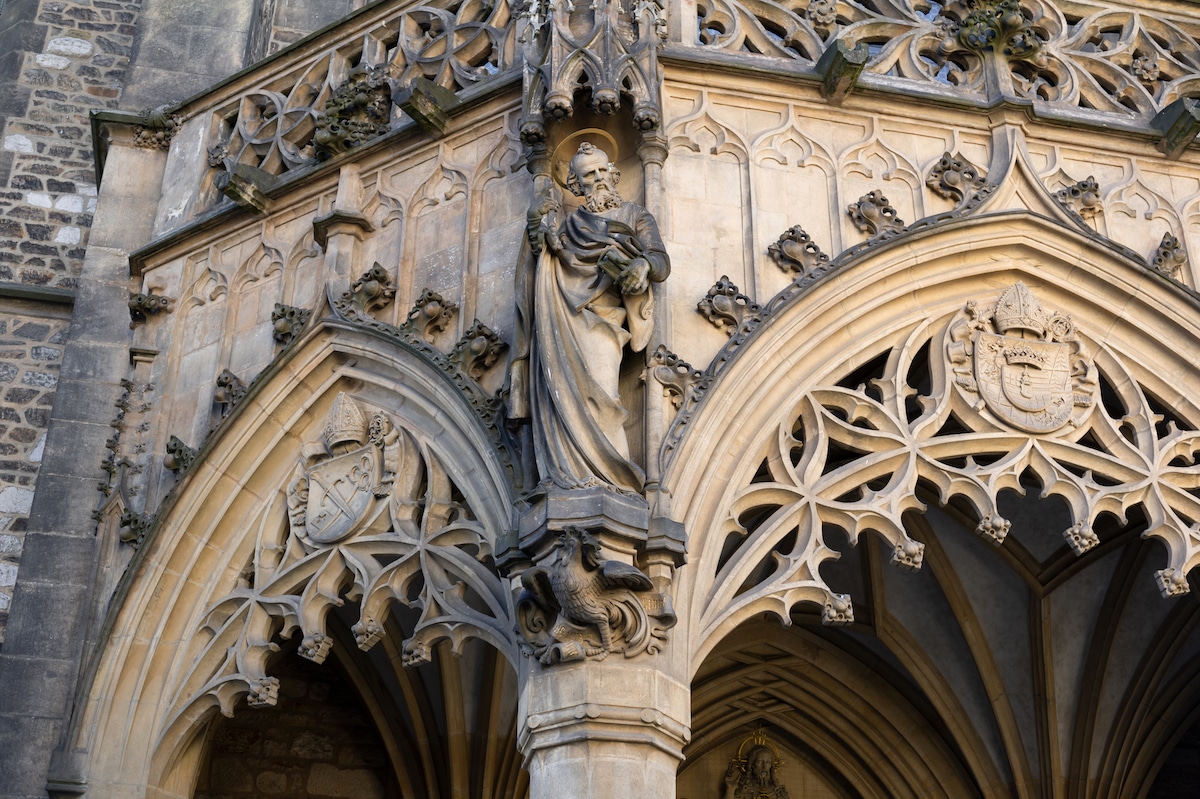
Photo: Stock Photos from M-SUR/Shutterstock
Pointed arches, often called ogival arches, meet at a pointed crown instead of a continuous curve. This important icon of Gothic architecture later led to the rib vault.
Vaulted Ceiling
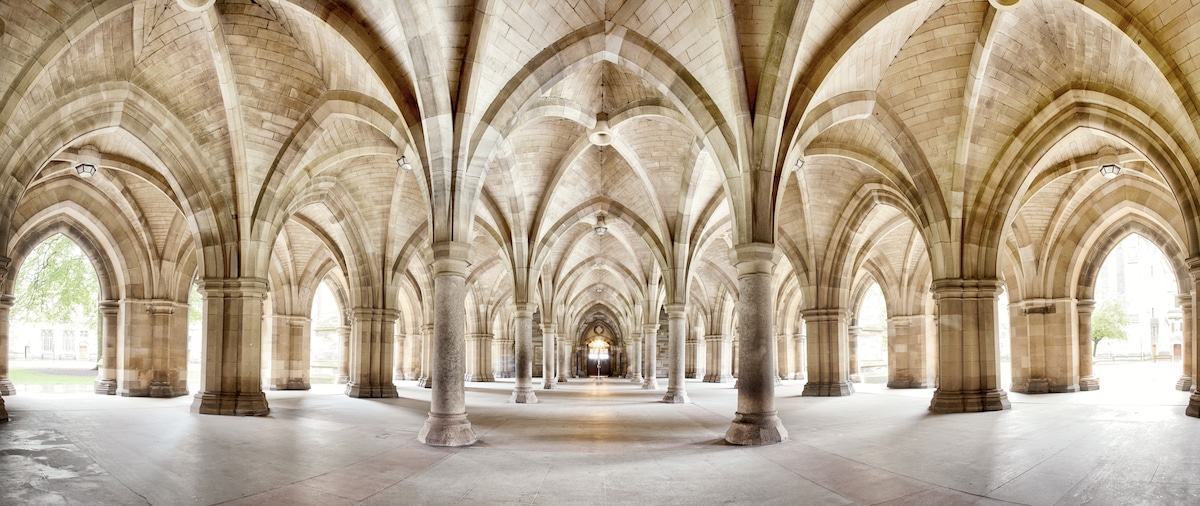
Photo: Stock Photos from Jane Rix/Shutterstock
The rib vault allowed for a wide space to be covered while preserving the highest possible interior space. It also allowed for cathedrals to use taller windows and thinner general walls.
Spires and Bell Towers
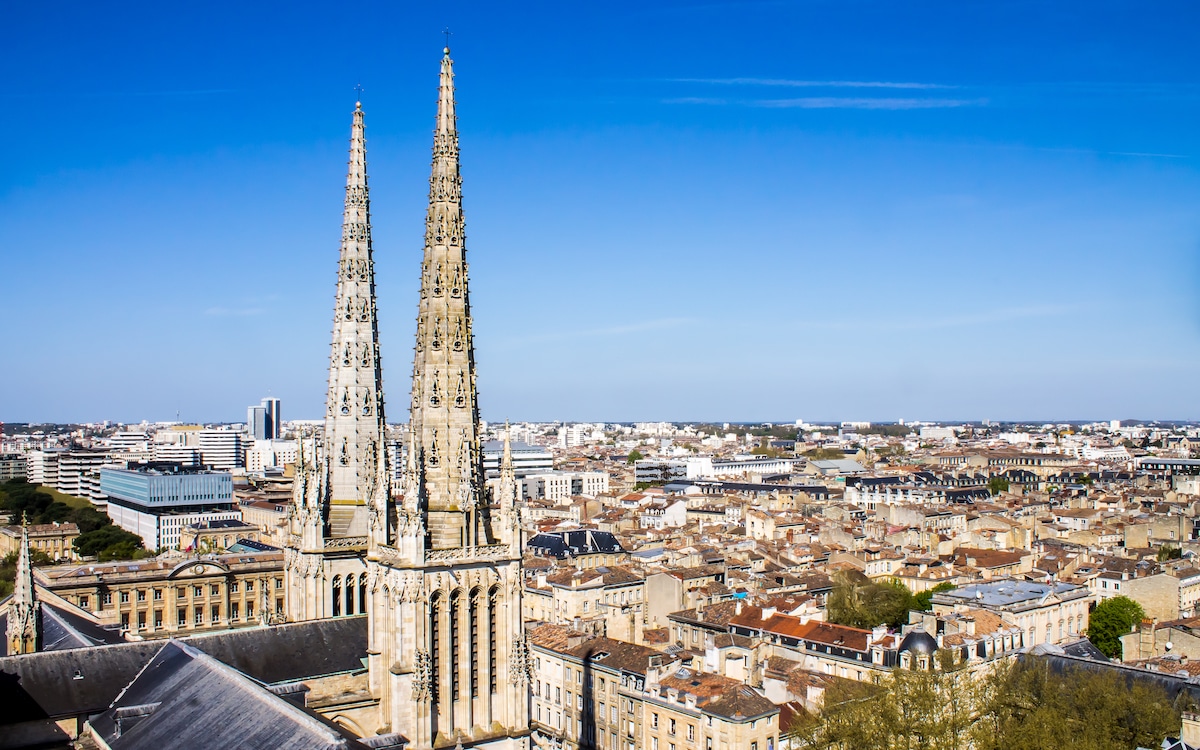
Photo: Stock Photos from marcociannarel/Shutterstock
Gothic spires are another recognizable characteristic of Gothic architecture. Spires were used for the same reason that verticality was so important: these buildings wanted to convey impressive heights as a feat of engineering. They also often held functions like a bell tower, which announced when mass or other services were beginning.
Tracery and Stained-Glass Windows

Photo: Stock Photos from wjarek/Shutterstock
In medieval Europe—when pilgrimage was an important part of Christianity—stained-glass windows acted as a visual Bible for those visitors who could not read. Tracery is the ornamental stonework or molding that breaks up areas of glass in Gothic windows.
Examples of Gothic Architecture
Notre Dame

Notre Dame in Paris, France (Photo: Stock Photos from anastas_styles/Shutterstock)
Notre Dame Cathedral is located on the Île de la Cité in Paris, France, and is one of the greatest examples of the French Gothic style. It is also one of the oldest Gothic cathedrals and has thus seen many historic events like the beatification of Joan of Arc and the coronation of Napoleón Bonaparte.
It pioneered some famous elements of Gothic architecture, including the ribbed vault and flying buttress that now define the style. While some of the buildings on the list were constructed during a transition from Gothic to Renaissance styles, this building was designed on the rise of Gothic architecture so instead includes some influences from the earlier Romanesque period.
Notre Dame is also well-known in part because of Victor Hugo’s novel The Hunchback of Notre Dame. One of the main attractors for visitors is now the belltower where the main character lived which can be reached by traveling the 387 steps through an extremely tight staircase.
The cathedral is also the most visited monument in Paris with an estimated 12 million people visiting it every year. Unfortunately, tourism to the structure is indefinitely halted following a devastating fire in April 2019. Reconstruction is slated for 2021 in the hopes of reopening Notre Dame by 2024 for the Paris Summer Olympics.
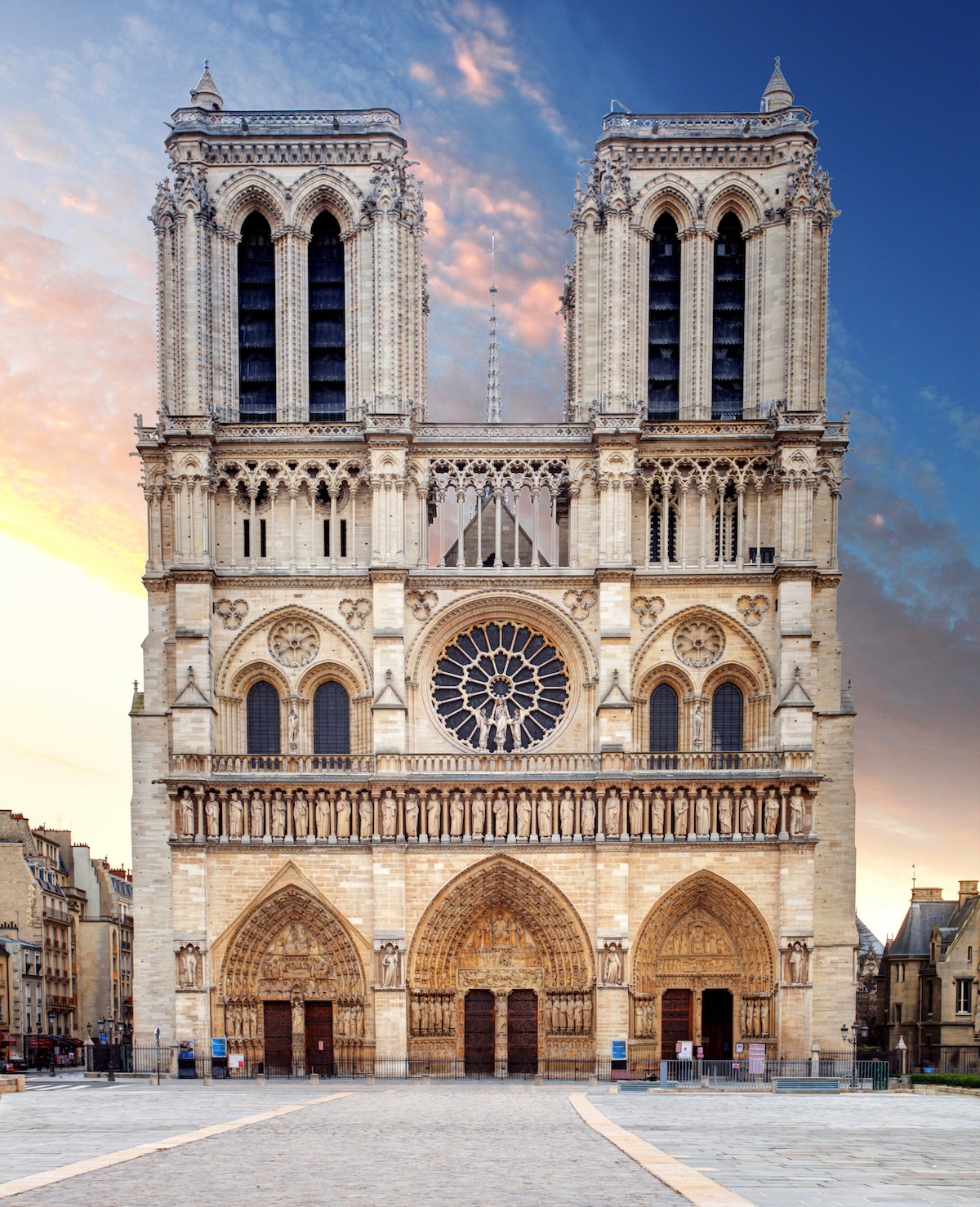
Notre Dame in Paris, France (Photo: Stock Photos from TTstudio/Shutterstock)
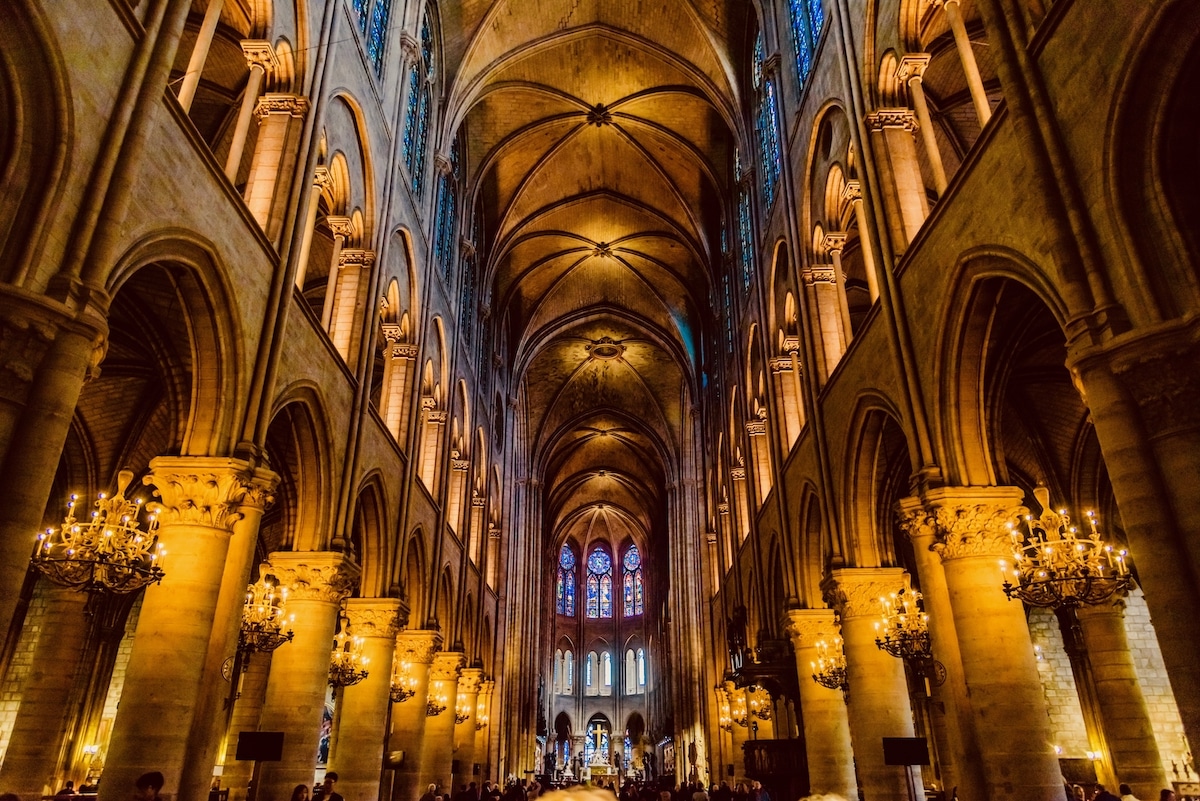
Notre Dame in Paris, France (Photo: Stock Photos from DiegoMariottini/Shutterstock)
Milan Cathedral

Milan Cathedral in Milan, Italy (Photo: Stock Photos from Beautiful landscape/Shutterstock)
The Milan Cathedral is dedicated to the nativity of St. Mary and is the fourth largest church in the world. It is described—sometimes lovingly and sometimes with disdain—as a mixture of many architectural styles. This can be expected as construction spanned from 1386 until 1965. The main shift in architectural style occurred when tastes began altering from the traditional Gothic to more contemporary Renaissance ideas. However, Renaissance ideas were not always smoothly adopted and Gothic and neo-Gothic details would continually be reintroduced.
Italian architect and engineer Simone de Orsenigo wanted the new church to be constructed in Lombard Gothic style which often used bricks. However, French architect Nicolas de Bonaventure redesigned the structure in the French Rayonnant Gothic style because he believed it was a more contemporary rendition.
Over the course of many years, construction would halt and start up again. Many redesigns of varying styles were proposed from Italian Renaissance to Baroque, and back to Gothic. Some of these influences, like the Baroque façade, were even reverted back to the Gothic style.
Despite many details converting back to the intention of the original Gothic, many are unconvinced of the cathedral’s validity or beauty. Oscar Wilde once wrote of it, “The Cathedral is an awful failure. Outside the design is monstrous and inartistic. The over-elaborated details stuck high up where no one can see them; everything is vile in it; it is, however, imposing and gigantic as a failure, through its great size and elaborate execution.”
While there will always be those who dislike it, it is difficult not to appreciate the sheer size and history of the cathedral. It is a perfect example of the light and dimension of Gothic architecture. The cathedral has the highest Gothic nave in a completed building in the world and inspires awe in almost all who visit it.
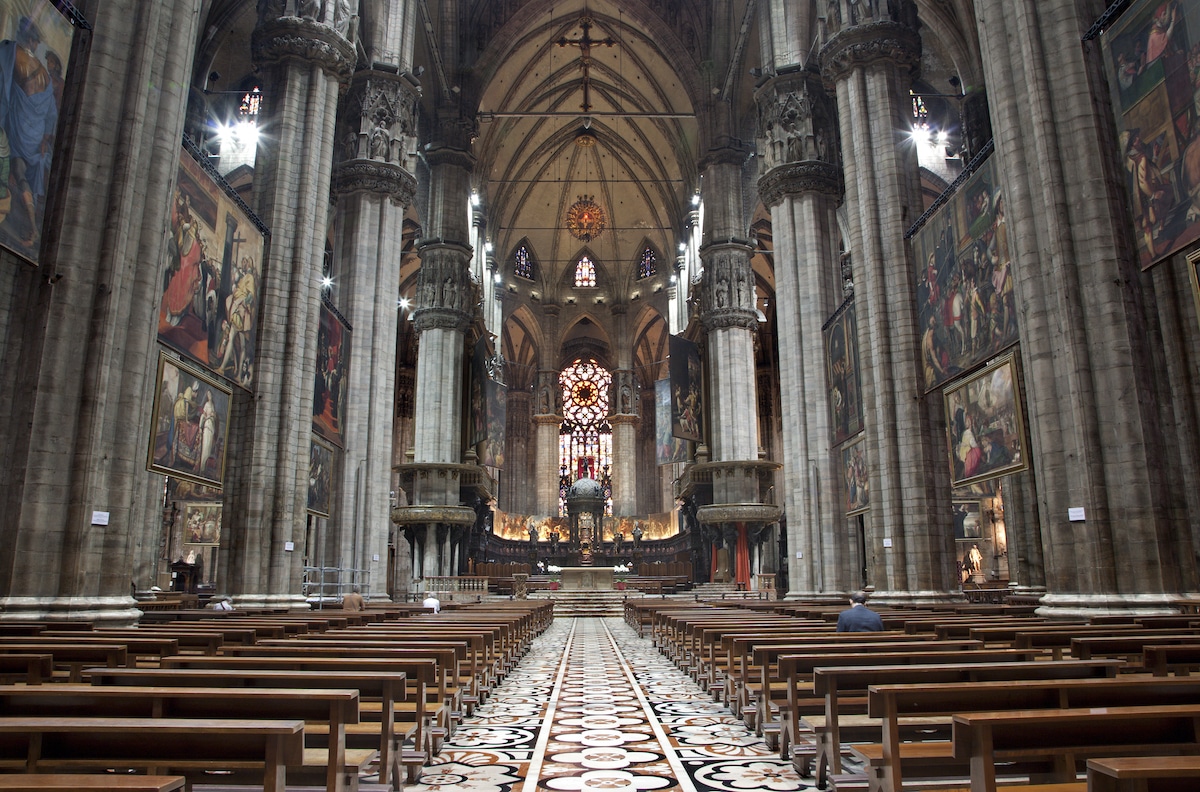
Milan Cathedral in Milan, Italy (Photo: Stock Photos from Renata Sedmakova/Shutterstock)
Canterbury Cathedral
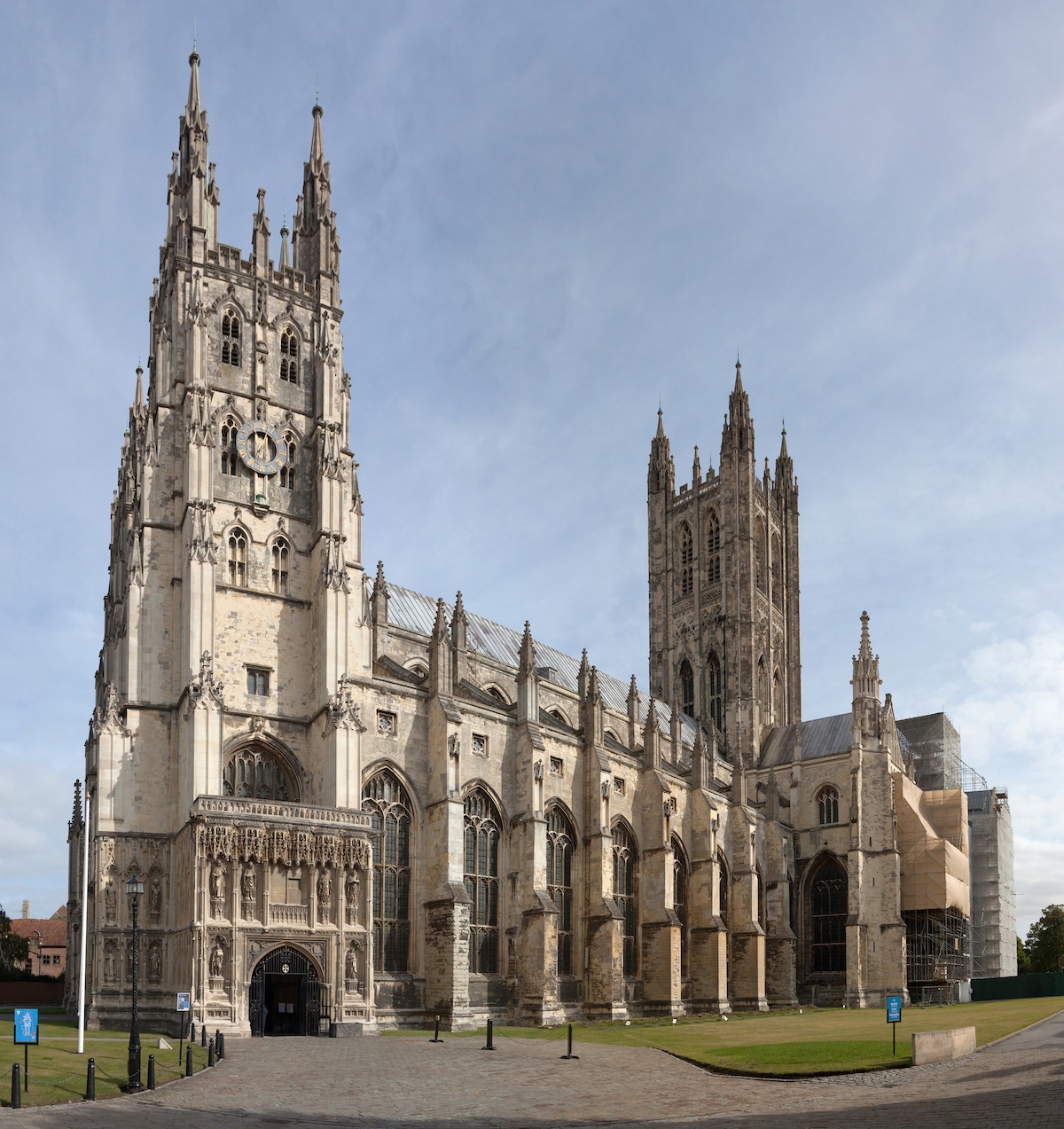
Canterbury Cathedral in Kent, England (Photo: Stock Photos from Pawel Kowalczyk/Shutterstock)
The Cathedral and Metropolitical Church of Christ at Canterbury, or Canterbury Cathedral, is a 12th-century Gothic church that has existed throughout many denominations of Christianity. It is included on this list because it was one of the most important stops for Christian pilgrims in medieval England. Since Gothic architecture symbolized the intensity of Christianity in this medieval period, it is a perfect example of what these structures meant for culture and religion.
When the Canterbury Cathedral was rebuilt after a fire in 1174, it was designed in the contemporary medieval style, making it the first Gothic building in England. The stained glass, which is an important feature of Gothic architecture, also played an important part as the building catered to visiting pilgrims. For those visitors who could not read, they could still learn the lessons of the Bible by following the stories represented on the pictures of the incredibly tall stained-glass windows.
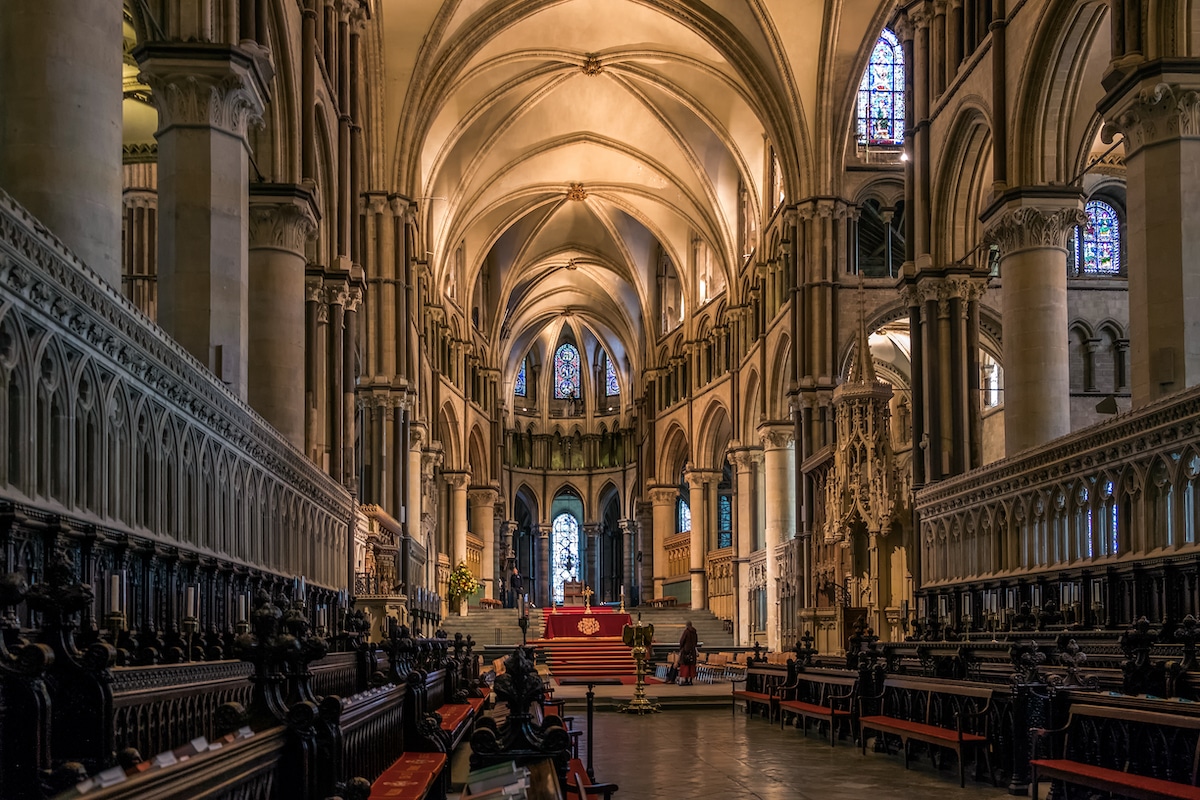
Canterbury Cathedral in Kent, England (Photo: Stock Photos from Philip Bird LRPS CPAGB/Shutterstock)
Santa Maria del Fiore
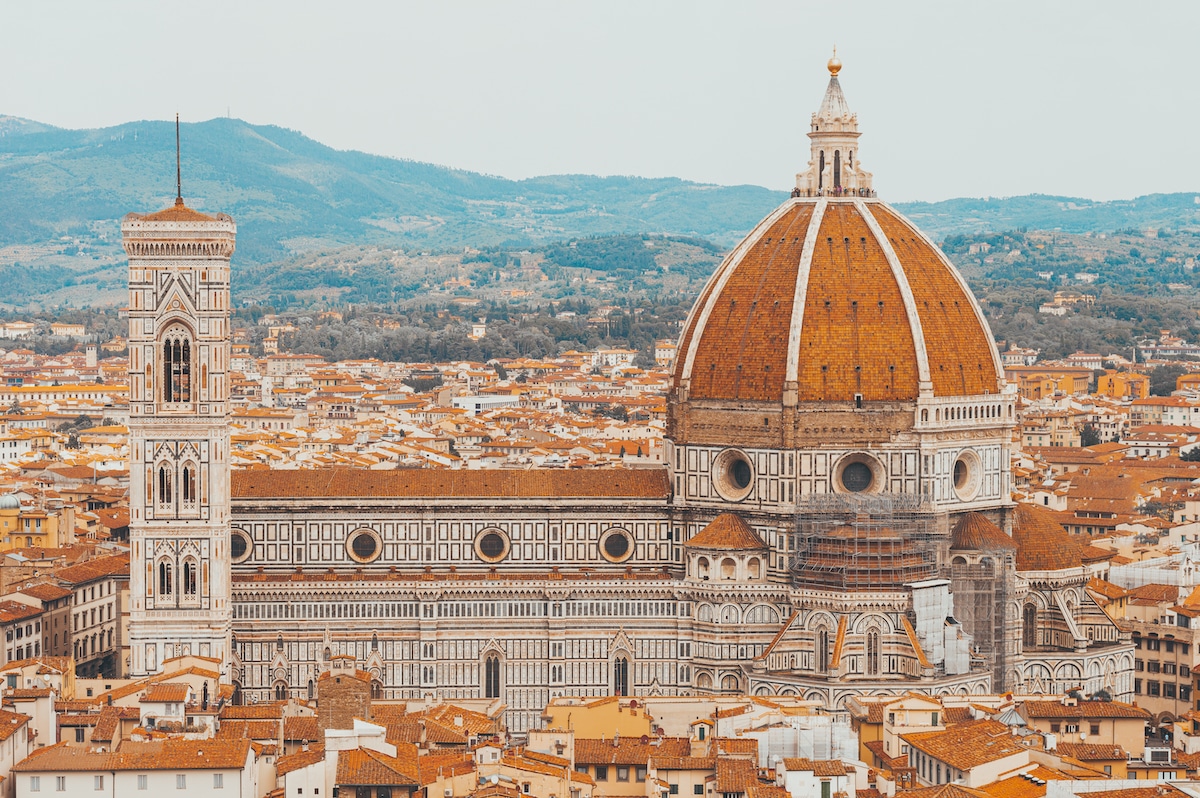
Santa Maria del Fiore in Florence, Italy (Photo: Stock Photos from Andy Gin/Shutterstock)
Florence Cathedral, or Cattedrale di Santa Maria del Fiore, is a cathedral that spans a few architectural styles including Renaissance, Gothic, and Gothic Revival. The cathedral is, in part, famous for “Brunelleschi’s dome”—a structural marvel designed by Filippo Brunelleschi that long stumped historians.
Though some might consider this building to be a Renaissance work, it deserves a spot on this list because there is a clear shift from style—much like the Milan Cathedral described earlier. Arnolfo de Cambio provided the general design for the cathedral which was done in the contemporary Gothic style. It includes a wide central nave with an aisle on each side separated by the classic Gothic pointed arches.
Many architects and craftsmen would work on the structure after, all following Gothic principles until Filippo Brunelleschi won the commission for a dome. This victory marked an important win for Brunelleschi in his life-long feud with rival goldsmith Lorenzo Ghiberti. It is believed that the decision not to use Gothic characteristics like flying buttresses was a serious indicator of the Italian Renaissance. Instead, Brunelleschi’s dome was more similar to the Pantheon and other Mediterranean domes.
Italian architect Emilio De Fabris designed the façade of Florence Cathedral in the Gothic Revival style in the 19th century. His design finalized the project with the same Gothic influences with which it was conceived.

Santa Maria del Fiore in Florence, Italy (Photo: Stock Photos from Felix Lipov/Shutterstock)
Cologne Cathedral
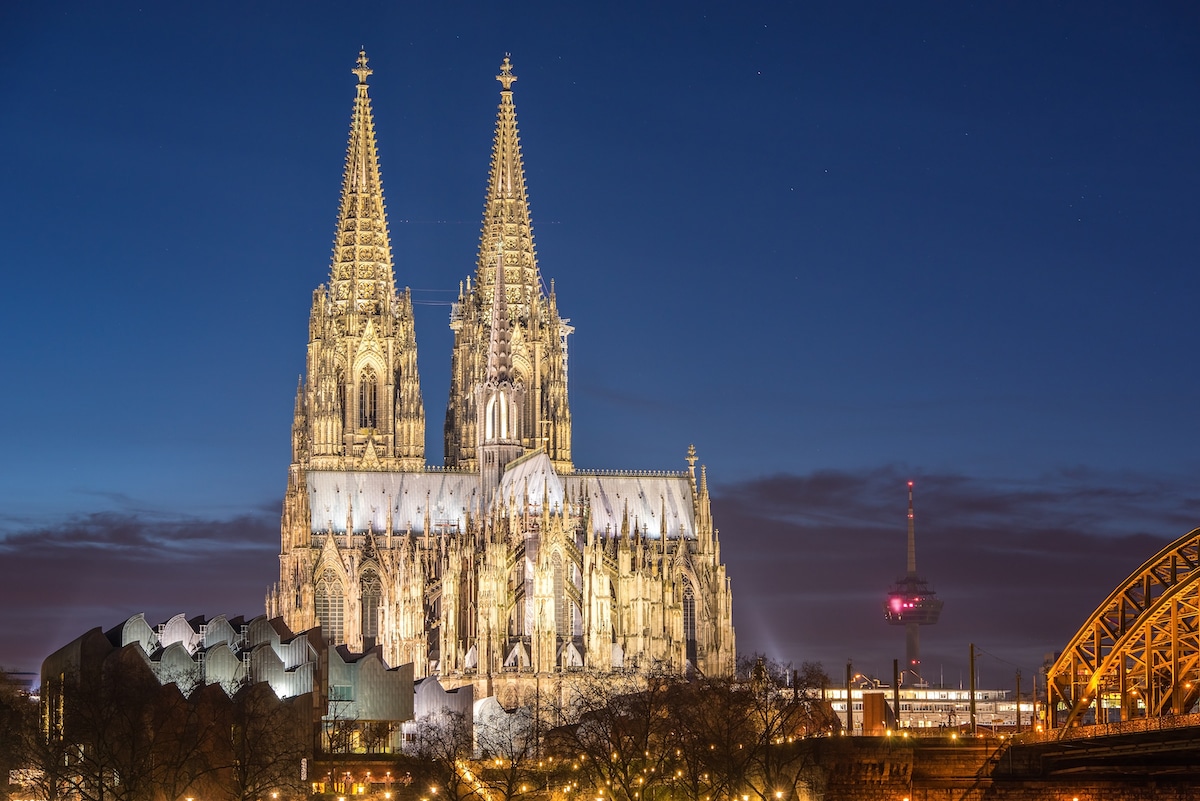
Cologne Cathedral in Cologne, North Rhine-Westphalia, Germany (Photo: Stock Photos from freedom100m/Shutterstock)
The construction of Cologne Cathedral took over seven centuries, from 1248 to 1880, which makes sense considering the church is the largest Gothic building in all of northern Europe. It includes five aisles and boasts one of the highest Gothic vaults in the world. It is perhaps most recognizable by the towering twin structures that reach over 500 feet tall. The towers even won Cologne Cathedral the title of the tallest building in the world until the Washington Monument was completed in 1884.
One of the most fascinating points about Cologne Cathedral—and a few other buildings on this list—is that it was completed in the Gothic style despite being constructed through many different time periods and different design aesthetics. Construction was halted and renewed again many times so that pieces are Gothic and others Gothic revival, but it can still be clearly understood as an example of this architectural style.
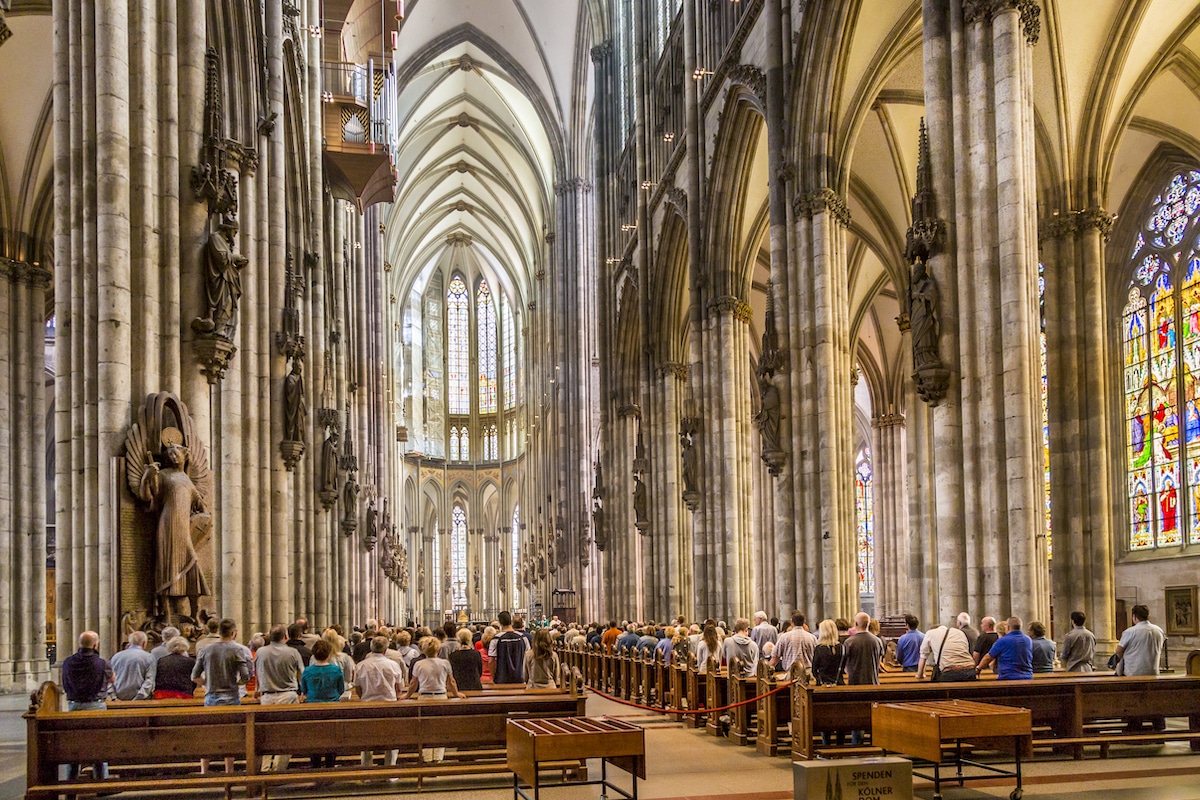
Cologne Cathedral in Cologne, North Rhine-Westphalia, Germany (Photo: Stock Photos from travelview/Shutterstock)











































































